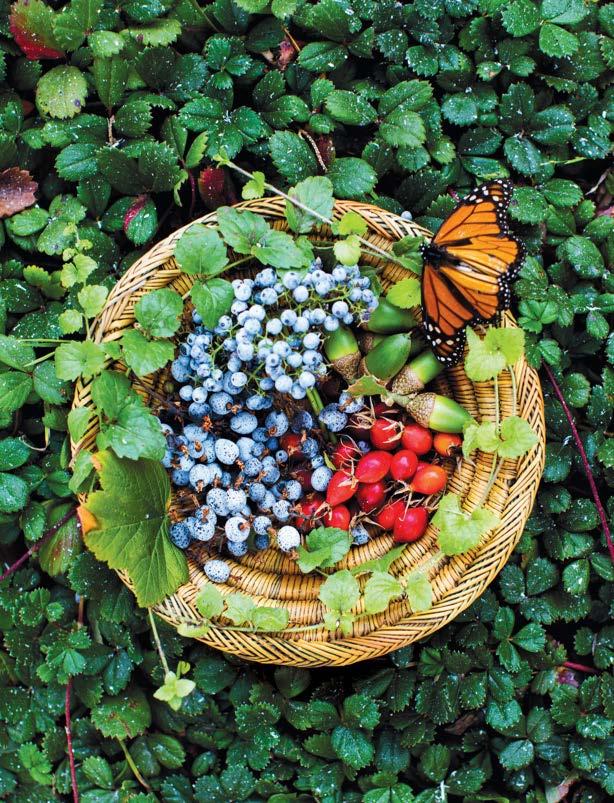
























































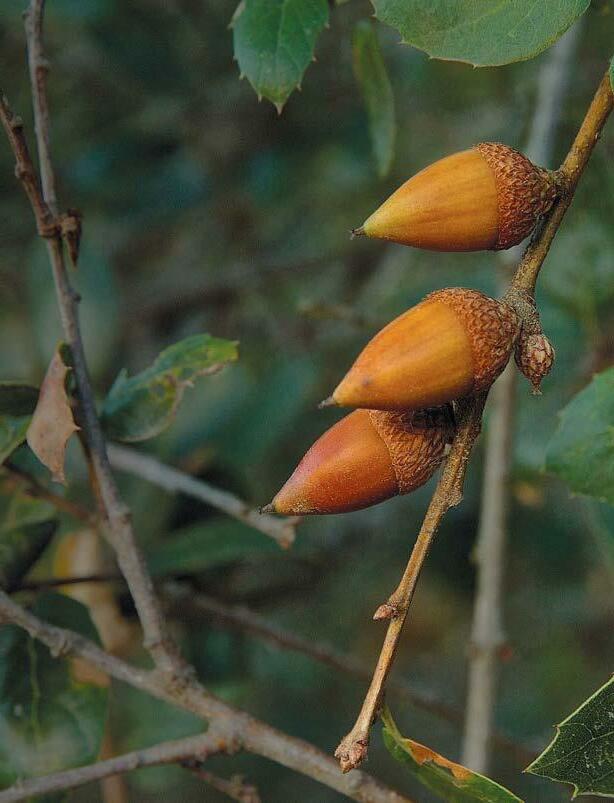































































































As we were going to press a gloomy orange glow had settled over the Monterey Bay, the result of wildfires raging up and down the West Coast.
The dusky days were disorienting and frightening, but for most of us the darkest times had come a few weeks earlier when four devastating fires broke out all at the same time in the Santa Cruz Mountains, south Salinas, the Cachagua hills and Big Sur.
The chaos of those out of control fires—the widespread evacuations, the smoke, the heat and the raining ash—along with the exhaustion of dealing with COVID-19 for the past six months and the rage of Black Lives Matter protests combined to make a hellish stew.
It was almost too much to handle, but people rushed to help, not only first responders but also chefs and farmers and loads of volunteers. All of you inspired us and that’s why we decided to call this edition our HOPE issue.
You can read about some of those local heroes in our fire story on page 38. The rest of our fall issue is filled with stories of hope. We intend it to be a kind of prayer or incantation, summoning up better days ahead and showing us—through the beautiful words and photos of our talented contributors—some of the ways we can get there together.
For example, we hope we can re-learn to live in a more harmonious way with the environment and with our changing climate in the same way members of the local Amah Mutsun tribe are rediscovering their heritage, through a program Laura Ness reports on in her story Native Traditions.
We hope we can better appreciate the abundance of our region, not just the plentiful farms of the Salinas Valley, but also the bounty all around us, that Kathryn McKenzie discovers in her story about modern day foragers.
We hope to see increasing biodiversity and less monoculture in the varieties of fruits and vegetables that are grown around here and described in the stories about Birdsong Orchards and John Cox’s ode to chile peppers.
We also hope to see increasing diversity in our local hospitality sector and are proud to spotlight the hard work of three young Latinx sommeliers in Raúl Nava’s story Decanting Latinidad.
We hope that new efforts to reduce food insecurity can result in a healthier community, as Mark C. Anderson examines in his story Doctor’s Orders.
We hope our lives can become simpler, cozier and more self-sufficient in ways new-mom Caroline Chambers and homesteader Jessica Tunis reveal in their delicious recipes for skillet pizza and homemade bacon!
We sincerely hope that all those whose lives, homes and businesses have been disrupted by fires or by the pandemic will be able to return, rebuild and recover quickly under sunnier skies.
And finally, as the autumn days shorten and we finish up the harvest season, we hope that our challenges will become easier to manage in the days ahead so that there will be plenty to be grateful for when it’s time to carve the turkey and wish everyone a happy Thanksgiving!
EDITOR AND PUBLISHER
Deborah Luhrman deborah@ediblemontereybay.com 831.600.8281
FOUNDERS Sarah Wood and Rob Fisher
COPY EDITOR Doresa Banning
LAYOUT & DESIGN Matthew Freeman and Tina Bossy-Freeman
AD DESIGNERS Zephyr Pfotenhauer Savanna Leigh
CONTRIBUTORS
Mark C. Anderson • Liz Birnbaum
Crystal Birns • Jaime Boddorff • Magali Brecke
Caroline Chambers • John Cox • Rob Cuthrell
Dagmar Dolatschko • Michelle Estigoy
Margaux Gibbons • Amanda Heyse
Alex Luhrman • Michelle Magdalena
Kathryn McKenzie • Raúl Nava • Laura Ness
Ken Payton • Zephyr Pfotenhauer • David Royal The Jams Brand • Patrick Tregenza Jessica Tunis • West Cliff Creative
ADVERTISING SALES
ads@ediblemontereybay.com • 831.600.8281
Shelby Lambert shelby@ediblemontereybay.com Kate Robbins kate@ediblemontereybay.com

Aga Simpson aga@ediblemontereybay.com Penny Ellis penny@ediblemontereybay.com
DISTRIBUTION MANAGER
Mick Freeman • 831.419.2975
CONTACT US:
Edible Monterey Bay P.O. Box 487 Santa Cruz, CA 95061 ediblemontereybay.com 831.600.8281 info@ediblemontereybay.com
Edible Monterey Bay is published quarterly. All rights reserved. No part of this publication may be used without written permission of the publisher. Subscriptions are $28 per year at ediblemontereybay.com. Every effort is made to avoid errors, misspellings and omissions. If, however, an error comes to your attention, please accept our apologies and notify us. We also welcome letters to the above address. Thank you.
Deborah Luhrman Publisher

























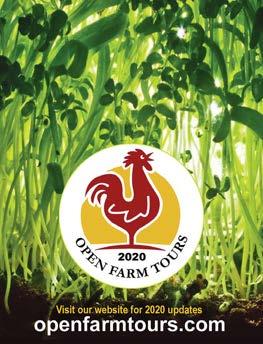



Relearning how to live in harmony with nature
BY LAURA NESS PHOTOGRAPHY BY MICHELLE MAGDALENATo succeed at his job as curator of the California Native Plant Garden at the UC Santa Cruz Arboretum & Botanic Garden, where he has worked for over 20 years, horticulturist Rick Flores has always relied on his green thumbs and his deep love of nature. But his roles as steward of the Amah Mutsun Relearning Program and associate of the Amah Mutsun Land
Trust require two good ears, too. Active listening is critical as he partners with members of the Amah Mutsun tribe to rediscover their historical foodways and ecological balance.

Clockwise from top left: bay nuts roasting in a basket (photo courtesy Santa Cruz Museum of Natural History); Rick Flores, steward of the Amah Mutsun Relearning Program, is not a Native American himself, but of Filipino and Irish ancestry; a controlled burn at Pinnacles National Park and (below) manzanita berries being made into cider (photo courtesy Santa Cruz Museum of Natural History).

Forcibly removed by Spanish missionaries from the coastal grasslands that once covered much of Santa Cruz, Monterey and San Benito counties, the Amah Mutsun were enslaved to help build the Santa Cruz and San Juan Bautista missions. Denied land ownership after the Spanish conquest, the Amah Mutsun have no tribal land to call their own. Flores says many relocated to the Central Valley to find work. Lacking federal status, they don’t have a magic casino to shower them with cash.
Instead, they are seeking to reconnect with their past, and to the land that once nourished their ancestors. Working with tribal leader Valentin Lopez along with numerous Western history academics, Flores helps curate and cultivate a native plant garden at the arboretum that the Amah Mutsun may access for food and textile resources.
Some of the food-producing plants in the 40-acre plot include plentiful huckleberries, gooseberries, currants, tanoaks, manzanitas and hazelnuts. “Some tribal members recently picked manzanita berries, which are used for cider and for tea, sweetened with yerba buena,” Flores says.
What’s harder to find are the once plentiful native grasses. “Archaeological evidence shows two-thirds of the diet of the coastal tribes was plant based prior to contact. Seeds were a big part of that. It’s rare to find plants with a big enough population to harvest,” says Flores. He points to invasive species as one reason for grassland decline. The indigenous peoples, though, knew how to combat this.

“Land use skills were needed to increase available food sources,” he says. “Coastal prairies were burned every three to five years to propagate desired species. Woodlands were historically burned every seven to 10 years.” Without the help of fire, coastal grasslands are turning into woodlands filled with non-native species and wildflowers are disappearing. Devastating wildfires throughout our region in August, produced renewed calls for a return to the use of fire to better manage our ecosystem and prevent catastrophic events.
In the garden, which university staff carefully watered throughout the CZU Lightning Complex Fire, Flores plans to add Indian potatoes and wild onions, along with wildflowers, such as red maids, chias and tarweeds.
He hopes the interest of the general public through donations and “work and learn” program participation at the arboretum (temporarily halted due to COVID-19), will help the tribe relearn and renew their native traditions, and teach us all something in the process.
Relative newcomer to UCSC, assistant professor Yve Chavez is a native of the Tongva tribe of Southern California. Having grown up on ancestral land associated with Mission San Gabriel, she’s intimately familiar with native culture. As part of the History of Art and Visual Culture Department (HAVC), Chavez teaches undergraduate and upper division courses in California Indian art, and the missions of California, Arizona, New Mexico, Texas and Florida.
In the wake of the death of George Floyd, the social justice movement has highlighted abuses of the California mission system. Chavez has made it her life’s work to shed light on the contributions of Native tribes to building these missions, and to dispel myths about Spanish influence.
Says Chavez, “California’s first peoples were a vital component of the missions’ labor force. They constructed the churches and other buildings at each of the 21 missions using locally available and imported materials.
“Coastal prairies were burned every three to five years to propagate desired species. Woodlands were historically burned every seven to 10 years.”



The initial structures at the missions typically consisted of materials that native peoples used in their own structures such as tule and willow, which are plants that still grow in California today. Despite their associations with Spanish colonization and imported architectural styles, the mission churches and structures are unique to California and reflect the knowledge and labor of California Indian peoples.”
An art historian, she appreciates the murals indigenous peoples painted at the missions, which reflect their experiences.
“The wall paintings inside the church at Mission Santa Barbara have been linked to native painters, likely from the Chumash community,” says Chavez. While many original murals were painted over as time took its toll, wall paintings inside the churches at Mission Santa Barbara and Mission San Juan Capistrano are beautifully restored.
Much of her research has focused on the artistic legacies of two Southern California tribes: “the Chumash and Tongva, who are neighbors, and have similar material and visual culture. For instance, Chumash and Tongva weavers are known for their coiled baskets,” says Chavez. “Leaders and elders within the Tongva and neighboring communities are working towards educating others about native foods such as pine nuts and chia seeds. The Chia Café Collective, for instance, leads related workshops and classes and even published a book of recipes from Southern California.”
When asked what some of the most important lessons we can all learn from indigenous peoples are, Chavez echoes Flores. “California Indian land stewardship practices, such as controlled burns, are valuable for cultivating California’s natural resources and preventing wildfires.” Chavez mentions that native tribes are actively assisting Cal Fire
in wildfire prevention in some parts of the state. Perhaps it is truly time to pay their words heed.
A relearning session on indigenous botanical knowledge and the use of native plants.

In good news for another local tribe, the Esselen people have regained their former territory alongside the Little Sur River, facing the sacred Pico Blanco peak in the Santa Lucia range. Through partnerships with the Western Rivers Conservancy in Portland and the California Natural Resources Agency, the Esselen obtained a grant to purchase the 1,199-acre Adler Ranch. Funds came from Proposition 68, passed in 2018, that set aside $60 million for competitive grants to acquire Native American natural, cultural and historic resources in California.
The Esselen intend to use the land for ceremonies and educational purposes, and will share it with other Central Coast Ohlone tribes, including the Amah Mutsun and the Rumsen, who also suffered cultural persecution and near extinction at the hands of the Spanish. No permanent structures will be built.
Nature humbles us all with her constant power. Yet, with a bit of human tending, she suffices to nurture the souls of us all, indigenous roots, or not.
Laura Ness is a longtime wine journalist who contributes regularly to Edible Monterey Bay, Spirited, Los Gatos Magazine and Wine Industry Network, sharing stories of the intriguing characters who inhabit the world of wine and food.
Amah Mutsun
arboretum.ucsc.edu/education/relearning-program
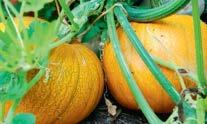










Carmel Valley couple hunts, gathers and farms to create a self-sufficient life
 STORY BY KATHRYN MCKENZIE PHOTOGRAPHY BY DAVID ROYAL
STORY BY KATHRYN MCKENZIE PHOTOGRAPHY BY DAVID ROYAL
When Cristin DeVine and Peter Fonken look out over the golden hills of Carmel Valley, they see not just the beauty that is there, but also a wealth of edible native plants that sustain them.
Between foraging from the wild and growing their own food at home, they’ve made a sacred commitment to living off the land. It takes some time and energy, but as DeVine puts it, “This is what we do for fun.” That involves evenings cracking acorns by hand, shelling beans and pitting cherries—whatever needs to be done, depending on the season.
It’s a lifestyle that seems straight out of centuries past, although 21st-century conveniences—such as having a freezer—make it easier to preserve what they grow. But many of the techniques they employ are as old as humankind, like hand-grinding corn kernels and fermenting vegetables.
On a recent summer afternoon, they prepared a seasonal lunch feast that mingled the bounty of their homestead with wildcrafted dishes. The married couple spends a lot of time playing with their food, making it look as special as it tastes. “We want to honor our food and make it beautiful,” DeVine says.

Home milled acorn flour and a treasured variety of Navajo corn that Fonken has been re-planting for 25 years.


A licensed marriage and family therapist, DeVine says she and Fonken, who works for the Bureau of Land Management, both have been interested in wild foods since their youth. DeVine lived in Alaska in her 20s, where she fell in love with an indigenous Alaskan, and from him and his family learned to hunt and prepare game. Fonken learned to hunt as a boy, and has studied the plants and animals around him ever since. “I grew up eating acorns in Michigan—I started a long time ago,” he says.
When they became a couple and moved to Carmel Valley 10 years ago, their mutual interest and appreciation for foraging and growing food shifted into high gear, and they agree that each of them inspires the other to do more and do better.
The pandemic, too, has kicked it up a notch. DeVine is now leading the majority of her counseling sessions remotely, giving her more time at home to be out in their gardens or tending their 15 chickens. Preserving, whether by freezing, canning, drying or fermenting, is a
full-time obsession. But it’s all necessary to preserve the bounty that would otherwise go to waste.
Wild foods also need to be processed. DeVine and Fonken gather acorns from valley oaks, and nuts from bay laurel trees. Acorns are soaked in water for a week or two, ground and soaked again, to leach out toxins. Bay laurel nuts are roasted and ground, and can be used for a hot coffee-like beverage or in desserts, where they taste like earthy chocolate. DeVine calls it “California cacao.” At other times of the year, they pick huckleberries and fern fiddleheads, along with wild herbs and greens, like miner’s lettuce.
“There’s nothing hard about foraged foods, but there’s also nothing fast about it,” says Fonken. “It takes time and labor.”
The two are constantly learning new things about foraging as well as finding inspiration from others, such as their friend Shane Peterson, co-author of The Farmhouse Culture Guide to Fermenting, and from articles in Edible Monterey Bay, where they’ve gleaned tips on preparing acorns. Their hope is to host farm-to-forage pop-up dinners with Peterson someday, to fund projects and training for Native
“There’s nothing hard about foraged foods, but there’s also nothing fast about it. It takes time and labor.”
American communities.
DeVine and Fonken have divided their sloping property into multiple gardens, each with a particular purpose, and fenced it to keep out deer and other critters. There are a berry and olive tree garden, a small dryfarmed fruit orchard, and a larger vegetable and herb garden that Fonken calls “the food jungle.” It offers the unusual (Inca berries and gigante beans, for instance) as well as more standard items.
This garden in particular is unruly, with squash vines curling around the base of cornstalks, dill going to seed and green grapes hanging low around a gabled gate. But for all its wild appearance, it is prolific and full of surprises. Some of it was planted intentionally, and some of it just came up on its own, no doubt from seeds left over from last year.
Letting vegetables live out their natural lives is part of the couple’s philosophy, with the cycle of growth, harvest and reseeding inherent in what they view as a way to live in harmony with the natural world. They also save seeds from year to year, like Fonken’s treasured Navajo corn that he’s been replanting for a quarter century. They compost everything they can and use rainwater stored in two tanks to irrigate via a gravity-fed drip system.
Eggs from the chickens and honey from three beehives help supplement the wealth of fruits and vegetables, a flood of homegrown food that all comes from their one acre. As they serve up a wide assortment of dishes for lunch, which includes a delicious lime-honey-rosemary drink, a fermented “taco bar” vegetable medley, beet-painted deviled eggs on a bed of nasturtium blossoms, refried beans made from heir-
Limeade with honey and rosemary, acorn olive oil cake and sweets made from roasted bay nuts that taste like earthy chocolate.



loom pintos and tortillas made from that Navajo corn, it’s obvious that this food makes them happy.
DeVine notes the health benefits of eating this way, too. Eating nutrient-dense wild foods enhances one’s personal microbiome, as does homegrown organic produce. Add to that the stress-relieving benefits of working in the soil, and it makes for better physical and emotional health, she says: “There’s something about the meditation of being in flow with the planting and tending of the garden. It keeps us in a beautiful rhythm.”
Fonken says that his family had gardens when he was growing up, and there’s something about knowing where his nourishment comes from that lessens his stress level. “When I could grow my own food, I could relax,” he says.
“It’s a whole lifestyle in harmony and balance with the land,” adds DeVine. “We have purpose and a focus. There’s a deeper sense of meaning.”
Kathryn McKenzie, who grew up in Santa Cruz and now lives on a Christmas tree farm in North Monterey County, writes about sustainable living, home design and health for numerous publications and websites.
Fall is prime time for gathering acorns, if you’re so inclined to try your hand at making acorn flour for use in baked items.
Acorn flour, a nutrient-rich food source that has been a staple of indigenous peoples of California for millennia, isn’t hard to make, but it does require soaking and processing to leach out tannins that make it bitter and inedible.
You may use acorn flour as a gluten-free flour substitute in your favorite recipes, although it may absorb slightly more liquid than other gluten-free flours.
For the cake
1¼ cups extra virgin olive oil (preferably locally sourced)
½ cup honey
2 cups acorn flour (instructions below)
1⁄3 cup almond flour or meal
2 teaspoons baking powder
½ teaspoon baking soda
½ teaspoon kosher salt
3 tablespoons Grand Marnier or Cointreau liqueur
1 tablespoon orange zest, finely grated
3 tablespoons fresh orange juice
2 teaspoons vanilla extract
3 large eggs
Note: To fully capture the flavors of the local landscape when cooking with wildcrafted foods like acorn flour, it is beneficial to use as many other ingredients as possible that can be locally sourced. Because olive oil and honey both are strongly influenced by their environment, using locally produced versions allows you to, in essence, taste your local landscape.
For the topping
1 teaspoon orange zest, finely grated
3 tablespoons fresh orange juice
3 tablespoons orange blossom water
1⁄3 cup honey (preferably locally sourced)
Note: Orange blossom water can be found at international food stores that sell Middle Eastern foods or at specialty cooking stores.
For the cake: Preheat oven to 400° F. Line the bottom of a 9-inch springform pan with a round of parchment paper. Oil sides of pan. Whisk acorn flour, almond flour, baking powder, baking soda and salt in a medium bowl to combine and eliminate any lumps.
Stir together liqueur, orange juice and vanilla in a separate small bowl and set aside.
Using an electric mixer on high speed (whisk attachment if using a stand mixer) beat eggs, orange zest and honey in a large bowl until mixture is very light—about 5 minutes.
With mixer still on high speed, gradually stream in the oil and beat until incorporated and mixture has become thicker.
Reduce mixer speed to low and add dry ingredients in 3 additions, alternating with the liqueur mixture in 2 additions. Fold mixture several times with a large spatula, making sure to scrape the sides and bottom of the bowl. Scrape batter into prepared pan.
Place cake in preheated oven and immediately reduce temperature to 350° F. Bake until top is golden brown, center is firm to touch and a tester inserted in the center comes out clean, 40–50 minutes.
For the topping: Make the syrup while the cake is baking. Bring orange zest, orange juice, orange blossom water and honey to a boil in a small saucepan over medium heat, stirring. Reduce heat and simmer 3 minutes. Remove from heat.
As soon as the cake comes out of the oven, brush or spoon syrup evenly over the top.
Transfer pan to a wire rack and let cool before removing springform ring. Serve warm or at room temperature with coconut whipped cream, if desired.
All acorns have edible nuts, but tannin levels in them vary widely. In the Carmel Valley area, valley oaks boast some of the largest nuts but have lower tannin content, making harvesting and processing easier.
Collect mature, brown acorns that have fallen on the ground. Discard any with wormholes. Leave enough acorns to share with the local wildlife.
Using a nutcracker, shell acorns. Place the nutmeats in a food processor and pulse until coarsely chopped.
Soak chopped acorns in a food-grade 5-gallon bucket, and cover completely with water. Drain and change water twice a day for 1–2 weeks. Avoid pouring out any fine powder that gathers on top of the coarser nuts as this is a valuable part of the flour. Taste for bitterness (tannins) after 1 week. Continue soaking and rinsing until the bitterness is gone. This process can be speeded up with more frequent water changes or by rinsing the acorns in steadily running water.
Drain acorns completely once the bitterness is gone, and spread on dehydrator trays or oven rack at 125–130° F.
Dehydrate until completely dry. Place nuts in food processor and grind to fine flour.
Acorn flour can be stored in an airtight container in the freezer until ready for use. Unshelled acorns can also be stored in the freezer for up to a year. —Cristin DeVine

Birdsong Orchards keeps rare fruits and flowers alive
 STORY BY JESSICA TUNIS PHOTOGRAPHY BY JAIME BODDORFF
STORY BY JESSICA TUNIS PHOTOGRAPHY BY JAIME BODDORFF
Farmer Nadine Schaeffer’s hair is the color of plums and purple sunsets, wild artichokes and lavender roses, as though the vivid colors of the fruits and flowers she tends have somehow stained her wild locks.
But that is nonsense, or poetry, anyway, and it’s likely such a thought might only cross your mind as you savor an incredible late red beauty plum, or a dark rubinette apple. You might be forgiven for lapsing into poetry with such flavors lingering on your palate, and the scent of an ebb tide rose still in your nose.
At Birdsong Orchards, Schaeffer takes pride in growing unusual varieties like these, whose flavors and scents can be both familiar and a revelation. An apple is an apple, and a plum is a plum, after all, but the diverse selection of varieties she cultivates challenges what we think we know of the flavor profiles of these fruits.
The CCOF-certified organic farm climbs a gentle hill on a south-facing slope in the Pajaro Valley. Rows of trees—walnut, pear, fig, cherry, apricot, guava, citrus, persimmon, plum, pluot, peach, nectarine and apple—one type per row, span the width of the 8-acre plot. This time of year, it’s the apples that hold center stage, as the wild abundance of the summer harvest season has finally receded, leaving crates of pears in cold storage and the apple trees still hung with fruit.

We walk along the rows of carefully pruned trees, their leaves rustling quietly, their branches weighted with fruit of every color. The names of each variety are printed on small silver tags that glint in the sun, and their old names make another kind of poem; ashmead’s kernel, orleans reinette, calville blanc. The names tell a story of the generations of orchard-keepers who bred each variety for specific purposes—such as long storage, cider, pies or fresh eating.
Schaeffer leans into a dark-leafed tree and gently lifts an apple to pluck at the peak of ripeness. “This is one of my favorites,” she says, handing me a red cinnamon spice apple. It’s not a pie apple,
Red D’Anjou pears are one of 175 varieties of fruit trees growing at Birdsong Orchards.

despite the name, but the flavor is crisp and rich, and, yes, warmly spicy, like cinnamon. It’s unlike any supermarket fruit.
Most of us know by now how, in the course of industrialization, many heirloom varieties have been lost in favor of easy transport and favorable cosmetic appearance. A red delicious apple is pretty, but bland and ubiquitous. Schaeffer, growing as she is in apple country, has a particular affection for the apple trees that root in her dark clay soil, and she has made a point of growing unusual varieties well suited to our local conditions. She sees her varied planting as a deliberate hedge against monoculture; in a shifting climate, it makes sense to diversify and experiment, pushing the boundaries of what can be grown on the Central Coast.
She grows over 175 varieties of fruit trees, sourcing them as bare root saplings from specialty nurseries, or sometimes from cuttings made by members of the Monterey Bay Chapter of the California Rare Fruit Growers Association, of which she is the vice president.


The harvest is abundant and though apples keep well in cold storage, Schaeffer will have sold them all by the time January rolls around.
“People are curious about these varieties,” she explains, “but it’s almost impossible to find them in most of the
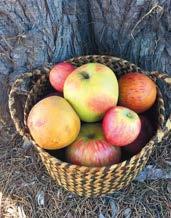
The names tell a story of the generations of orchard-keepers who bred each variety for specific purposes—such as long storage, cider, pies or fresh eating.




country.” Unlike the tender stone fruits, apples ship pretty well, so when a customer orders from her website, Schaeffer packs the apples in sampler boxes and ships them all over the country. Each box contains half a dozen fruits, selected from a rotating cast of rare heirloom varieties.
It’s an unusual business model, a blend of hyper-local and national, but it allows her to charge a premium for the apples she grows with such care. The rest of her fruit is sold on site, from a pop-up farm stand that operates on Fridays. COVID-19 has changed things, of course; customers now pay online, and fruit is set out for them to pick up when they arrive.
On a different part of the farm, a flower field is a rainbow of vibrant shades and scents, abundant with Weeks and David Austin roses. Throughout the week, florists and u-pick customers may stop by the farm by appointment to harvest flowers by the bucket, sourcing for arrangements or special events, or just the joy of being outside in a field of flowers. Schaeffer also delivers to a few florists, harvesting buckets of roses, dahlias, sweet peas, sunflowers, peonies and more, as the season permits. For added scent, she tucks in sprigs of scented geraniums from her bed of more than a dozen pelargonium varieties, including rose geranium, chocolate and nutmeg. Pre-pandemic, she hosted classes at the farm as well, on topics
like flower arranging, marijuana cultivation and the ancient art of hoshigaki.



Today, a shaggy assortment of llamas, alpacas, goats, chickens, cats and dogs surveys the visitors as they arrive. The sound of migratory birds is ever present, too; the farm’s name, Birdsong Orchards, is not mere fancy but a tribute to the diversity of winged wildlife that thrives in the area.


In the slanting light of early autumn, surrounded by her orchard and the flower fields glowing below, Schaeffer takes stock of her life. She hasn’t always been a farmer. Though she grew up surrounded by farms, for most of her career she worked in Silicon Valley, in a high-powered, male-dominated field. She was good at what she did, but it was a stressful life, too. This one, offering a taste of seasons on the tongue, scents of flowers in the air and songs of birds on the breeze, suits her better. The steady rhythm of labor is deeply satisfying. The connection to cycles and harvest nourishes her in a way that tech work never did.
Jessica Tunis lives in the Santa Cruz Mountains and spends her time tending gardens, telling stories, and cultivating adventure and good food in wild places.
Birdsong Orchards birdsongorchards.com nadine@birdsongorchards.com
For an increasing number of investors, investing is not just about selecting opportunities that do well in their portfolio. It’s about owning investments that also make a positive social impact. Sustainable investing is a growing niche of investment practices designed to help investors achieve both objectives. If you are curious about how to align your values with your portfolio, read on.
Compared to traditional investing, sustainable investing takes a different philosophical approach to the marketplace. The concept of sustainability is rooted in the belief that in order to thrive, businesses must make responsible choices regarding the environment, society and their business operations. Similarly, ignoring these areas may eventually have the potential to negatively impact a business’ bottom line. Those who agree with this approach believe that sustainable investing offers reasonable potential for growth and profitability.
To effectively evaluate the choices companies are making, investors focused on sustainability are calling for increased transparency from executives about their priorities and how they conduct business. In response, more companies are creating sustainability initiatives, engaging with the community on societal topics, and promoting their accomplishments to attract investors.
Sustainable investing is personal Investing with a social conscience can take a variety of approaches, allowing you to determine the ideal strategy for your beliefs and financial situation. Some common strategies include investing in companies that:
• Promote causes – firms that prioritize sustainable practices as part of their growth strategy may be attractive to investors. Examples include firms reducing their carbon emissions, partnering with charities or promoting the welfare of children or animals.
• Pursue solutions to a long-term societal issue –investors may want to support companies researching or innovating ways to solve problems. Cancer research, driverless cars and educating consumers on a key issue are several examples.
• Operate responsibly – companies that demonstrate accountability to high ethical standards may also be of interest to investors. Relevant topics may include fair employment practices for women, valuing diversity and engaging ethically with vendors in a company’s supply chain.
• Avoid activities you find detrimental to society –this “negative screening” process may include staying away from firms that don’t share your values or have a harmful impact on society or the environment. Examples may include alcohol, fast food, tobacco and gambling stocks.
As sustainable investing continues to gain traction among firms and investors, watch for more opportunities to customize your investments according to your preferences. If this investing approach interests you, talk to your financial advisor to learn more about how you can align your investments for growth and for good.

Erik Cormier is a Financial
Advisor with Cormier Financial Partners, a private wealth advisory practice with Ameriprise Financial Services, Inc. He specializes in feebased financial planning and asset management strategies and has 13 years of experience in the financial services industry. To contact him, email Erik.Cormier@ampf.com or call 408-472-0757. Registered office address is 522 Ramona St., Palo Alto, CA 94301.
Ameriprise Financial Services, Inc. and its affiliates do not offer tax or legal advice. Consumers should consult with their tax advisor or attorney regarding their specific situation.
Investment advisory products and services are made available through Ameriprise Financial Services, Inc., a registered investment adviser. Ameriprise Financial Services, LLC.


Member FINRA and SIPC.
© 2020 Ameriprise Financial, Inc. All rights reserved.
Legal File #- 2034526

My culinary relationship with chile peppers started at a hole-in-thewall adobe cafe in Santa Fe in 1990.
Our family had just moved to northern New Mexico and my grandparents were visiting from Dallas. Granny, a notoriously austere woman and light eater, ordered a cup of chili for dinner.
When the somewhat skeptical server asked whether she would like red or green, Granny responded, “Red,” with a similar tone.
Things got worse when the server asked if Granny would care for tortillas or sopapillas, and then kindly let Granny know saltine crackers were unavailable.
The chili, or more accurately chile, that Granny got that night was a far cry from the ground beef and tomatoes she expected.
It was a smooth, crimson pool of fire. Never one to waste food or to complain, Granny ate it all, bite by bite, her stoic composure betrayed only by a sheen of sweat.
Despite the common misconception, the enjoyment of chiles isn't about a bombardment of brow-mopping intensity; it’s about the often subtle layering of flavors that stimulate the taste buds.
From sweet to hot and everything in between, a selection of peppers from Fire Tongue Farm in Hollister.
Many cultures have mastered the art of cooking with chiles, from Thailand to Mexico, Spain to China. Sichuan cuisine in particular is known for its ability to send the diner’s palate on an exquisite, albeit sadistic, journey through cooling,
numbing and then igniting the tastebuds with an addictive blend of chiles and peppercorns. Just like a master winemaker, a chile savvy chef can coax the exact level of flavor and spice from peppers by harmonizing a multitude of capsicums in a single dish.
Without the heat and flavor of chiles, the dishes of my childhood in New Mexico would be little more than piles of bland meat and unseasoned tortillas. Even 20 years into my career, I still rarely make a dish without including some form of hot pepper.
New Mexican red, guajillo, arbol, smoked paprika, harissa, Aleppo, jalapeño, pasilla — of the hundreds of varieties, each has its own distinct flavor and punch. With so many chiles to choose from, how do you pick the perfect one for your recipe?
Before you add a chile pepper to a dish, you first need to decide whether to use fresh or dried. Many peppers have a dual identity, one when they are fresh and another when they are dried.
The most common example of this would be jalapeños, known as chipotles when they are smoked and dried.
Unlike many fresh herbs that become sad and dull during the drying process, chiles undergo a metamorphosis into something inspired and mysterious. That said, I would advise throwing away your paprika and cayenne. You know the ones, those crusty little canisters that have been shoved in some dark corner of your spice cabinet for the last decade. I’m not recommending it just because they are old and stale, but because there are so many superior options available. Cayenne is my




least favorite of the dried chile options. It provides an insipid sting to the tongue, but lacks complexity of flavor and balance. Paprika has its time and place as well. If you must buy paprika, buy a true smoked Hungarian paprika for a rich and decadent goulash; don’t just taint a dish with a stale and musty sprinkle of ubiquitous red powder.
Think of fresh chile peppers and dried chile peppers the way you think of wine and wine pairing. A bright green jalapeño is the New Zealand sauvignon blanc of the pepper world, green and tropical, ideal for pairing with light fresh flavors such as sliced tomato, marinated fish and avocado.
A refined dried chile, such as Chimayo red, has many of the subtle earthy undertones and tannins found in a classic pinot noir. As with a light bodied pinot noir, these chiles lend themselves to pairing with a wide variety of dishes, but work particularly well with slow braised meats.
As peppers ripen and dry, the herbaceous notes give way to an Old World bouquet of dried cherry, leather and wood smoke.
Neither fresh nor dried is inherently superior. In fact, that’s the entire reason why most self-respecting New Mexicans choose “Christmas” when ordering their meals. This is in response to the unofficial state question: “Red or green?”
The two types of chiles bring out different subtleties in a dish. Transitioning from the green chile side of the plate to the red chile side of the plate is to explore a whole spectrum of flavors.
The way you prepare chiles also affects how they influence the final dish. It is important to remember when working with peppers that most of the actual flavor is contained within the thin wall of meat sandwiched between the membrane and skin of the pepper.
To capture the flavor of a raw jalapeño, for example, without too much heat, with a sharp knife, remove the stem and tip, then lay the pepper flat on a cutting board and use the knife to roll out the pepper into a thin sheet, extracting and discarding the seeds and membrane. To subdue the spice even further, soak the cleaned jalapeño flesh in a bit of ice water for 20 minutes before chopping.
To accentuate the sweetness of a fresh pepper and bring out more flavor, place it directly over the flame on your stove, turning periodically until it is uniformly blackened. Wrap the charred pepper in plastic and steam it in a pan for 10 minutes. Using a sharp paring knife, scrape away the blistered skin and then use either the entire pepper or remove the seeds.
When it comes to dried chiles, you will have more versatility when working with whole dried pods rather than with powder. Just like working with fresh chiles, the majority of the oils and capsicum within the pepper are contained in the membranes and seeds. For dried chile pods, simply crack off the stem and then shake out the seeds.
Then toss the pods in a dry sauté pan over medium heat until they begin to smoke and become aromatic. The pods can be left whole for use in blended sauces and braises, or ground in a coffee grinder for sprinkling over a dish or stirring into an aioli or root vegetable purée.
Autumn is the perfect time to explore the world of chiles. In New Mexico, the first cool breezes from the mountains coincide with the alluring aroma of chile roasters set up in parking lots around the state, roasting freshly harvested chiles in tumblers over live fire.
While there isn’t a chile roasting tradition in the Monterey Bay area, you will still find a cornucopia of heirloom peppers at local farmers’ markets at this time of year.
To preserve the flavor and vibrancy of fresh green chiles (jalapeños, poblanos, serranos, Anaheims, Habañeros, to name a few) a quick pickle is a great option. Make a pickling brine by bringing 1 part vinegar and 2 parts water to a simmer and then add sugar, salt, onion, spices and other aromatics to taste.
You want the brine to be about 30% more potent than your desired final product, so don’t be shy with the sugar, salt and aromatics. Once the brine comes to a simmer, pour it over whole or sliced chiles. These can be kept for a few months in the refrigerator or indefinitely if properly canned.
Another option for preserving the flavor of fresh chiles is to roast them over an open flame, remove the charred skins and seeds then cool and freeze in individual Ziploc bags.
Drying ripe peppers is also a great option for stocking your larder.
Look for the darkest, ripest peppers and then dry them out using a dehydrator or low oven.
If you use a wood or charcoal barbecue, you could also load the chiles into the grill after you are done cooking and once the temperature has fallen below 300° F. Leave the chiles in the grill overnight and then finish drying them in the oven if needed.
For one of the most ancient forms of chile preservation, you can tie your own chile “ristra,” a long braided strand of peppers typically hung in a sunny, breezy area to dry. These are sadly used primarily for decorative purposes these days, but are also a delicious and practical option for home chefs.
Whether your ideal pepper eating experience is an innocuous pile of roasted bell peppers on a Philly cheesesteak or a heap of blistering pickled Habañeros on a plate of pork in the Yucatán, there is a perfect chile experience out there for just about everyone…even Granny.
The former executive chef at Post Ranch Inn’s Sierra Mar, John Cox is now pursuing a number of projects, including serving as a partner and consulting chef at Cultura comida y bebida in Carmel and chef-proprietor at Orcas Hotel on Orcas Island, Washington. For more, go to chefjohncox.com or follow him on Instagram and Facebook.
These thin-walled peppers are said to have been planted in northern New Mexico by Spanish conquistadors in the late 1600s. For the last four centuries they have been guarded as a local treasure and protected from cross-pollination by multi-generational family farms. The scarlet powder has the aroma of dried cherries, tobacco and leather with a subtle sweetness that transforms into fire across the tongue. This chile has gained so much popularity over the last few years that there are now counterfeit Chimayo chile powders for sale online. If you can get your hands on the real deal, I highly recommend saving some for very special recipes, especially slow braised meats and sauces.
These unassuming yellow chiles are a staple in kitchens throughout Peru. While fresh aji amarillos are becoming more widely available locally, they are most commonly found as a jarred paste or dried pod. These chiles reach a respectable level of heat and are potent enough to leave most people a bit tearyeyed. While undeniably spicy, they still have a very pleasant flavor, reminiscent of dried mango and green passion fruit. They are particularly well suited for pairing with raw fish.
This Turkish chile was introduced to me by Thamin Saleh at Jeninni Kitchen + Wine Bar. The peppers are harvested when they are deep red or maroon in color and then left to partially dry in the sun before being covered by a cloth in a process called “sweating” to prevent the pepper from completely drying out. This unique process yields a pepper that is remarkably unique and complex with aromas of chocolate, smoke and plum, and a flavor profile that oscillates between heat, acidity, sweetness and savory salinity. Because of Urfa’s dynamic taste and flavor, it can effortlessly enhance most dishes in a subtle, almost magical, way. Try these peppers sprinkled over roasted vegetables.
These red peppers from the Basque region have all the flavor you could hope for in a chile, without the searing heat. In many parts of the Pyrenees, these peppers have all but replaced black peppercorns in regional cooking. I love working with espelettes, because you can use enough that the flavor comes across without worrying about making a dish overly spicy for non-pepper lovers. Try mixing ground espelettes into fresh goat cheese for a delicious and vibrant spread.

Clearly there is some bias going on here, but roasted New Mexican chiles are an incredibly versatile ingredient. Keeping a bagful in the freezer is absolutely essential. They have a real affinity for cheese, but do well with any neutral ingredient that can carry the flavor, such as potatoes and eggs.
These tiny wild chiles are also known as bird chiles and can be found in many parts of the world including Southeast Asia. Clocking in at 100,000 Scoville units, these chiles may be tiny but they pack a serious punch! In Hawaii these peppers are used to make chile pepper water, a condiment seen on most tables. The recipe is simple: a few whole chiles, some vinegar, water and sea salt.
Heirloom Italian frying peppers, these chiles are mild but full of flavor. You can roast them in a pan with olive oil, finish with sea salt and eat whole like a large Padrón pepper. They are also large enough to stuff or dice in a variety of recipes as a substitute for less flavorful bell peppers.
You can find jalapeño peppers just about anywhere, which is great because they really are the Swiss army knife of hot peppers. Use them in salsas and guacamole or even grilled whole as a spicy accompaniment to a dish. My favorite way to enjoy them is in the form of a “popper.” Stuff with a decadent cheese, wrap in bacon and slow cook on the smoker until the bacon is crispy, and the cheese and jalapeño form a molten core.
Chef Michelle Estigoy developed this recipe after general manager Sarah Kabat-Marcy raved about something similar she tried at Boulenc pizzeria in Oaxaca. Estigoy says she puts this addictive sauce on everything from sandwiches to soups, but that it is especially delicious on mushroom tacos.
20 cloves garlic, sliced
1 cup whole dried arbol chile, de-stemmed
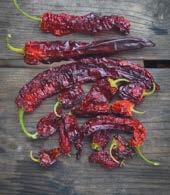
1 cup whole dried morita chile, de-stemmed

2 tablespoons sesame seeds
1 tablespoon salt
2 cups neutral tasting oil, such as canola
Heat 1 cup of oil in a frying pan over medium heat. Add the sliced garlic and fry until golden brown. Scoop out garlic with a slotted spoon and set aside. Toast chiles in the garlicky oil until they are aromatic and quickly remove with a slotted spoon. Be careful not to let them burn. Let toasted garlic and chiles cool, then add 2 tablespoons of sesame seeds to the mixture. Once cool, put all ingredients in the blender with additional 1 cup of oil and 1 tablespoon of salt. Give it a few pulses and jar. Makes 2 cups.
12 New Mexico dried red chiles (stems and seeds removed)
1 quart water
2 tablespoons salt
Put the water in a saucepan and bring to simmer. Toast chiles in a dry pan until aromatic. Add chiles to the water along with the salt and simmer until tender, about 45 minutes. Cool. Then liquefy in a high-powered blender until smooth.
Traditionally chiles, water and salt are all that are used. But sometimes I like to balance the final sauce using a touch of cider vinegar, sugar and butter.
Some people also add onions or coriander seed for additional flavor. If you are able to get a great red chile such as Chimayo red, I recommend keeping it very simple to start, and letting the pure flavor of the chile shine.
2 large potatoes (baked, cooled and grated on cheese grater)
1 tablespoon butter
4 large farm eggs
1 cup green chile (roasted, peeled and chopped. Hatch autumn roast works well)
½ cup Monterey Jack cheese, grated ½ cup mild Cheddar, grated
Salt and pepper
2 12-inch flour tortillas (thick style)
In a large well-seasoned cast iron pan place the butter and cook until bubbly and slightly brown. Add the grated potato and season heavily with salt and pepper. Keep the pan over medium heat until the potatoes start to brown.
Cover cooking potatoes with eggs and cheese. Once a crust has started to form on bottom of potatoes, begin to gently stir in other ingredients. You want a combination of slightly crispy potato with creamy cheese and eggs. It’s important
not to overcook the mixture or it will become dry, but you want enough browning to give texture.
While the potato and egg mixture is cooking, place the tortillas on a hot griddle or in a large pan. Cook for 20 to 30 seconds on each side.
Place the tortilla on a flat surface such as a cutting board. Lay half of the egg mixture vertically across the middle of tortilla, leaving a 2-inch margin on the right and left sides. Grasp the bottom edge of the tortilla and bring it over and down across the filling. Use your index fingers to maintain pressure on the upper tortilla while bringing the side of the tortilla toward the middle. Finally, use your thumbs to roll the burrito into its final shape. Makes 2.
Optional – To make it a smothered burrito, like in the photo, you will need another 2 cups of diced green chiles, 2 cups of red chile sauce (see previous page) and 1 cup of cheese. Place the burrito on a heatproof plate and smother each side of the burrito with 1 of the chiles. Top with grated cheese and bake at 400° F for 5 minutes to melt cheese.
 Courtesy chef John Cox
Courtesy chef John Cox












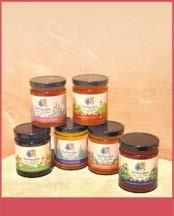





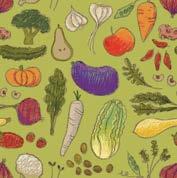



























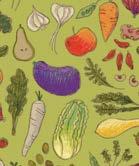









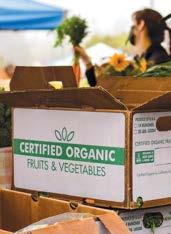







We take the slogan "Drink Local" to heart around here. The Monterey Bay area abounds with world-class wineries, craft breweries and cideries. As temperatures begin to drop, pop open a bottle of locally grown and crafted hard cider, and toast to the harvest season. Featured ciders (clockwise beginning on this page) include: Martinelli’s 1868 (Watsonville); Santa Cruz Cider’s Luz del Valle Orchard (Watsonville); Ratel's Dry Hopped Cider (Monterey); Twisted Roots' Hard Cider (Carmel Valley); Santa Cruz Scrumpy's Pomegranate Cider (Felton); Tanuki Cider’s "…after all" (Santa Cruz); Soquel Cider's Laura’s Orchard (Soquel).

 BY DEBORAH LUHRMAN
BY DEBORAH LUHRMAN
As we were going to press, fire crews were still working to fully extinguish four massive wildfires that broke out when a magnificent lightning storm rolled through the Monterey Bay area on Aug. 15.
The lightning storm was a sight to remember and we were still sharing photos and delighting in it two days later when we began to smell the smoke, towering clouds suddenly blocked the sun, everything took on an orange hue and lightning-sparked flames roared down from the ridgetops.
In numbers, the River Fire in south Salinas burned 48,088 acres and destroyed 30 structures, the Carmel Fire in the Cachagua hills above Carmel Valley burned 6,905 acres and left 73 buildings in ashes and the Dolan fire south of Big Sur, which turned out to be arson, burned through 93,554 acres of rough terrain as of press time.
In Santa Cruz County, the 85,746-acre CZU Lightning Complex Fire raged through the mountains, destroying outlying parts of Boulder Creek and Bonny Doon, and coming dangerously close to UC Santa Cruz and Davenport. Big Basin State Park burned in the firestorm, one man lost his life, and 1,490 homes and other buildings were destroyed—more than in the landmark Loma Prieta earthquake in 1989.
Those first few days it seemed everyone was on the move, fleeing the out of control flames. An unending stream of panicked phone calls and texts ensued. “Where are you?” “Are you okay?” “Is your house okay?” “How’s the smoke where you are?”
Mandatory evacuation zones grew daily. Even though the air was toxic and ash rained down like snow, my husband and I were among the lucky ones who got to stay in our own home, while most of our contributors and more than 85,000 residents had to leave theirs.
It’s hard to understand where the strength comes from, but as people started to evacuate, local chefs, farmers and restaurateurs—already brought to their knees by the COVID-19 pandemic—rushed in to offer food and comfort.
“Everyone wants to help,” said Katy Oursler, co-owner of Mutari Chocolate in Santa Cruz, which became a hub for donations of produce from markets and farms.
Organic fruits and vegetables were loaded up at Wild Roots markets in one evacuation zone and delivered to be made into meals for evacuees and firefighters, with the help of staff from World Central
Kitchen—the relief organization founded by chef-humanitarian José Andrés. Meantime, a truck from Live Earth Farm pulled up with veggies that had been destined for farmers’ markets, suddenly canceled due to the emergency.
“One really important thing to me is the opportunity to use produce that would otherwise be wasted due to the fire,” said Oursler.
At least 15 local chefs took part in preparing meals for WCK to distribute, working with produce donated by a dozen local farms, including strawberries from Swanton Berry Farm on the edge of the fires.
“Seeing local chefs and farmers reconnecting when picking up produce has been beautiful to witness and be part of,” she added. “Being able to connect with one another safely at the Mutari hub, and talk through the past months’ trials and tribulations has provided comfort and support to many of us this week.”
Similar scenes took place in Carmel Valley, where school board member Tess Arthur and chef Todd Fisher, of the Folktale Wine Group, quickly set up to feed early evacuees—moving their operation west as the fires grew closer.

Julia’s Vegetarian Restaurant pivoted its High Road Kitchen program from feeding those struggling from the pandemic to providing nourishment for evacuees. And while displaced from her own home in the Cachagua hills, EMB contributor Jordan Champagne, of Happy Girl Kitchen, organized a free “Love Feast” to feed firefighters and displaced residents.
It’s not possible to acknowledge all the local heroes who contributed to fire relief and many of the efforts are still ongoing. Check our website for ways you can help. But we can say without hesitation that when it comes to assisting those in need, our Monterey Bay food community is the best!
The sky turned dark as fire approached Swanton Berry Farm. Fortunately the farm was spared, but many workers lost their homes or were displaced by the blaze.














1. 1440 Multiversity in Scotts Valley partnered with Operation BBQ Relief—a nationwide nonprofit disaster relief organization—to provide meals for displaced residents and first responders.
2. Volunteers from World Central Kitchen processed donations of fresh produce in the kitchen at Mutari Chocolate in Santa Cruz.

3. A dozen craft breweries banded together to sell a benefit beer called Santa Cruz Strong—a hoppy blonde ale brewed at Discretion Brewing in Soquel. All proceeds are being donated to the Santa Cruz Community Foundation Fire Response Fund.
4. Brenda Deckman and Tabitha Stroup of Terroir in a Jar were among the first to feed evacuees at the county fairgrounds, then pivoted quickly to bottling and canning with local vegetables too damaged by smoke or heat for retail.
5. Chef Kendra Baker of Penny Ice Creamery, The Picnic Basket and Snap Taco sending out another batch of meals for World Central Kitchen.
6. Even the surfer statue showed appreciation for the firefighters.
7. Jordan Champagne of Happy Girl Kitchen provided meals for a traveling team of firefighters from San Bernardino.
8. Patrice Boyle and the crew at Soif turned the dining room into an assembly area for meals for World Central Kitchen.
9. Maite Idoia, a volunteer for World Central Kitchen, delivered warm meals to Cal Fire crews stationed in Bonny Doon.

10. Tatiana Glass of Avanti Restaurant, Andrea Mollenauer of the Food Lounge and Katy Oursler of Mutari Chocolate worked tirelessly to help World Central Kitchen with its relief efforts.

11. Tess Arthur and chef Todd Fisher fed evacuees in Carmel Valley.

12. Cooking down donated tomatoes helped achieve zero waste.


When the going gets tough, just make pizza
When my husband and I bought our first home in Carmel Valley, back in January of 2020, we had no idea just how important that home was about to become. Less than two months after moving in, along with the rest of California we were ordered to stay put. Everyone has a COVID-19 silver lining and mine is just how extraordinarily much we have cooked and eaten together as a family over the past seven months.
That has meant taco nights, lasagna nights, Indian nights …pretty much every kind of night! But most importantly, pizza nights. I love making pizza in a cast iron skillet. They are revered for conducting heat evenly, making cast iron the perfect at home pizza cooking vessel.
With these pizzas, we don’t leave a crusty border. We load on the toppings all the way to the edge because who wants to waste valuable pizza real estate in 2020?
My skillet pizza trick is to let the dough rise for two extra hours in the oiled skillet. This allows it to get big and bil-
BY CAROLINE CHAMBERSlowy, and we don’t lose any of that magic by transferring it to the skillet since it’s already there!


Start with one of these fall pizza recipes, full of seasonal flavors like balsamic Brussels sprouts, pomegranate and maple roasted winter squash, then let your imagination run wild.
These dishes are crunchy, they’re crispy and they can be started from scratch around 5pm and be hot on your dinner table for a late supper. This year has been full of a lot of good days, but also a lot of tough ones and, as it turns out, there are very few things that pizza cannot fix.
Caroline Chambers grew up in North Carolina, where she was raised on the robust flavors of the South. She has owned and operated a farm-to-table catering company in San Diego and has worked as a recipe developer and stylist for publications and brands including The New York Times, Robert Mondavi Wine, Food Network and MagicChef. Her first cookbook, Just Married (Chronicle Books), was published in October 2018.
We load on the toppings all the way to the edge because who wants to waste valuable pizza real estate in 2020?
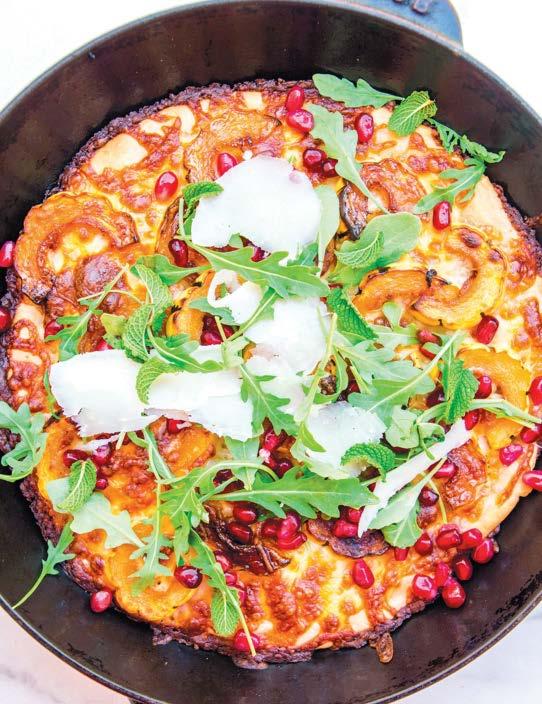
1 tablespoon olive oil
1 pizza dough ball
2 teaspoons olive oil
½ (14.5 ounce) can of whole peeled tomatoes
¼ teaspoon kosher salt
4 ounces shredded low-moisture mozzarella cheese (not fresh)
3 ounces mascarpone cheese
4 ounces cooked spicy Italian sausage
¼ jalapeño, thinly sliced
¼ cup fresh basil leaves, thinly sliced
Preheat oven to 500° F.
Coat a 10-inch cast iron skillet with olive oil. Place pizza dough ball in the center of the skillet and cover with plastic wrap. Allow to sit at room temperature for 2 hours.
Use your fingertips to gently dimple the pizza dough to spread it out across the entire base of the skillet, but not up the edges of the skillet.
Use your hands to crush 4 to 5 whole peeled tomatoes and spread them over the pizza dough like a sauce. You can spoon a bit of the tomato juices from the can over the dough as well if needed to cover it in a light layer. Sprinkle all over with salt.
Distribute the mozzarella cheese all over the pizza dough, covering the entire pizza. Dollop the mascarpone over top (don’t try to spread it, just drop it by the spoonful).

Distribute the cooked sausage and jalapeño slices over the top.
Bake for 15 to 20 minutes, until the edges are crispy.
Transfer to the stovetop and allow to cool for at least 5 minutes before using a spatula to loosen the pizza from the skillet and transferring it to a cutting board. Garnish with basil, cut into 6 pieces and serve.
1 tablespoon olive oil
1 pizza dough ball
1 small delicata squash
1 tablespoon olive oil
2 teaspoons maple syrup
¼ teaspoon kosher salt
1 tablespoon extra-virgin olive oil
2 cloves garlic
4 ounces shredded low-moisture mozzarella cheese (not fresh)
¼ cup baby arugula
¼ cup pomegranate seeds
1 ounce shaved pecorino romano or Parmesan cheese
1 tablespoon mint leaves
Coat a 10-inch cast iron skillet with olive oil. Place pizza dough ball in the center of the skillet and cover with plastic wrap. Allow to sit at room temperature for 2 hours.
Preheat oven to 425° F. Line a rimmed baking sheet with parchment paper.
Slice squash lengthwise and scoop out and discard the seeds. Slice squash into 1/8-inchthick half moons. Toss in a bowl with olive oil and maple syrup to cover
then place on the baking sheet.
Roast for 15 to 20 minutes, until golden brown. If the squash doesn’t feel totally tender, don’t worry, it will keep cooking on the pizza.
Turn up oven to 500° F.
Meanwhile, use your fingertips to gently dimple the pizza dough to spread it out across the entire bottom of the skillet, but not up the edges.
Drizzle extra-virgin olive oil over the pizza dough. Use a microplane or the smallest hole on a box grater to grate the garlic over the top. Use your fingers to spread the oil and garlic evenly over the dough, all the way to the edges.
Cover the entire pizza dough with mozzarella, then arrange the roasted squash over the top.
Bake for 15 to 20 minutes, until the edges are crispy.
Transfer to the stovetop and allow to cool for at least 5 minutes before using a spatula to loosen the pizza from the skillet and transfer it to a cutting board. Garnish with arugula, pomegranate seeds, shaved pecorino romano and mint leaves. Cut into 6 pieces and serve.
Makes enough dough for three 10-inch pizzas
2½ teaspoons dry active yeast
1 teaspoon sugar
1 cup warm water
2 tablespoons extra-virgin olive oil
1 tablespoon kosher salt
2 cups 00 flour (you can use all purpose if you can’t find 00)
1 cup all purpose flour, plus more for dusting
In the bowl of an electric mixer fitted with the dough hook attachment, stir together the yeast, sugar and water. Let the mixture stand until it starts to foam, about 10 minutes. If it doesn’t foam, start over! That
means the yeast is not alive and the dough will not rise.
Turn the mixer on low speed and add the oil and salt. Add the flour, 1 cup at a time, until it has all been incorporated. You might need to scrape down the sides a few times. Increase the speed to medium and continue mixing until the dough forms a smooth ball, about 5 minutes. If the dough feels too dry, add more water, 1 tablespoon at a time. If the dough feels too sticky, add more flour, 1 tablespoon at a time. Transfer the mixing bowl to a countertop.
Flour your hands, then reach
into the bowl, under the dough and pull the bottom of the dough up and over the dough ball. Rotate the bowl 3 times, repeating this action.
Transfer the dough ball to an oiled bowl and cover with plastic wrap. Place the bowl in a warm place and let it rise for 1 to 2 hours, or until the dough has doubled in size.
Turn the dough out onto a lightly floured surface. Roll the dough into a cylinder and divide it into 3 equal pieces. If you’re only making 1 pizza, wrap the other 2 pieces in plastic wrap and refrigerate or freeze.
1 tablespoon olive oil

1 pizza dough ball
4 ounces Brussels sprouts (8 to 10 sprouts)
1 small shallot, thinly sliced
1 tablespoon balsamic vinegar
2 tablespoons extra-virgin olive oil, divided ¼ teaspoon kosher salt
2 cloves garlic
4 ounces blue cheese
3 tablespoons toasted hazelnuts, chopped Freshly ground black pepper
Preheat oven to 500° F.
Coat a 10-inch cast iron skillet with olive oil. Place pizza dough ball in the center of the skillet and cover with plastic wrap. Allow to sit at room temperature for 2 hours.
Use your fingertips to gently dimple the pizza dough to spread it out across the entire bottom of the skillet, but not up the edges.
Place Brussels sprouts in a high-powered blender or food processor and pulse until chopped into small pieces. With a spoon, stir in the thinly sliced shallot, balsamic vinegar, 1 tablespoon extra-virgin olive oil and ¼ teaspoon salt.

Drizzle the remaining 1 tablespoon extra-virgin olive oil over the pizza dough. Use a microplane or the smallest hole on a box grater to grate the garlic over the dough. Use your fingers to spread the oil and garlic evenly over the dough, all the way to the edges.
Slice the blue cheese as thinly as you can and distribute 2/3 of it evenly over the pizza dough, all the way to the edges. Spread the Brussels sprouts mixture evenly over the pizza dough. Sprinkle the remaining 1/3 blue cheese over the top.
Bake for 15 to 20 minutes, until the edges are crispy.
Transfer to the stovetop and allow to cool for at least 5 minutes before using a spatula to loosen the pizza from the skillet and transferring it to a cutting board. Garnish with hazelnuts and desired amount of black pepper, cut into 6 pieces and serve.
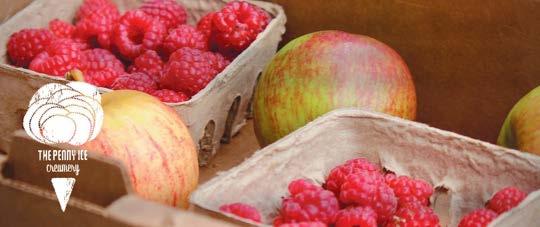
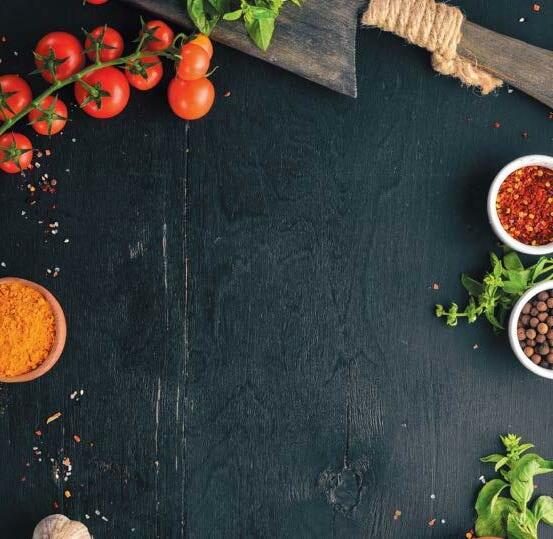







Change is in the wind. Unprecedented protests this summer inspired difficult—but necessary—discussions about diversity, equity and inclusion across all aspects of our society, including the restaurant and hospitality industry. Racist rants at local restaurants shook our sheltered beliefs of equality in our own backyard. And of course this has all played out during a pandemic that has disproportionately affected people of color and reinvigorated efforts to protect the most vulnerable in our community.
As the local hospitality community wrestles with ways to become more egalitarian, three sommeliers reflect on working in a field that’s been slow to change—wine service.
Bernabe De Luna, Fanny González and Germaine Esquivel work in an industry still dominated by white men and have experienced discrimination for being “other.” But they are resilient and unrelentingly in their pride for their Mexican culture and identity. These three share a passion for hospitality, and also hope and optimism that recent events have sparked a renewed drive to create a more inclusive industry.
Like many immigrants, Bernabe De Luna came here in pursuit of the American Dream. He moved from his hometown of Zacatecas, Mexico, to the Central Coast in 1988.
“I came here after my father passed away, just like everybody looking for a better living,” he says. At first, he found work in the farm fields outside Gilroy, but over time has become a fixture of Monterey County’s most elite epicurean endeavors—sommelier.
De Luna’s passion for wine took root at the historic Highlands Inn in 1991 when he answered a job posting for a busser at its California Market restaurant. Soon after, he moved to room service, where he became curious about the prized bottles of wine he delivered to room after room.

“In the winter, when it was slow, I started reading Wine Spectator, issue after issue,” he recalls. “It intrigued me how hundreds of wines were reviewed in every issue. ‘Why were there so many wines all over the place?’ I wondered.”
Curiosity turned to opportunity. “I didn’t want to be stuck in room service,” he says. “I wanted to—and still want to—become the best server in Monterey County.” The chance to move to the inn’s elite Pacific’s Edge restaurant inspired De Luna to study up on varietals and vintages. Armed with a passion for service and oenological knowledge, he bested three other applicants in line ahead of him to join the esteemed service staff at Pacific’s Edge in 1996. Over the next nine years, he rose up the ranks, becoming a sommelier on the floor in 1999, then lead sommelier and finally wine director.
De Luna was integral in securing talent for a hallmark event at the Highlands Inn—the Masters of Food & Wine. Winemakers, sommeliers and more hold him in high esteem. He forged lifelong relationships with wine professionals and helped gourmands from around the globe discover wine. His humble personality is disarming for wine novices, and his expert palate and encyclopedic knowledge wow grape geeks.
He left the Central Coast in 2005 to pursue opportunities with celebrity talent in Las Vegas and San Francisco. By 2010, De Luna returned to helm wine service at Cantinetta Luca and help coordinate wine service for another culinary fête—GourmetFest. In 2014, De Luna found himself once more at one of the county’s most buzzworthy dining destinations as wine director for Restaurant 1833. There, he showcased the unique terroir of Monterey County with its most storied wine producers. Earlier this year, De Luna joined the team at the slick Seventh & Dolores Steakhouse.
Despite his impressive pedigree, diners have sometimes had a hard time believing a Latino was the sommelier, De Luna recalls. “People would ask, ‘Can we speak to the somm?’ and I’d say, ‘Yes, that’s me.’ They’d say again, ‘No, can we speak to the somm?’ and I’d say again, ‘Yes, that’s me!’”
“Being a Latino in wine, I’m a ‘minority’ right now, but I can see a big movement in our profession. We won’t be a minority anymore,” he says.
What’s driving the demographic shift?
As a veteran of wine service, De Luna has seen Mexicans’ appetite for wine growing—squashing stereotypes that they only drink beer and tequila.
“Where I come from in Mexico—in the middle of the country, up in the mountains—there was wine, but not necessarily in my culture,” he re-
calls. “It was for the wealthy people, people in the upper class who traveled.”
Now younger generations of Mexicans embrace wine, crediting greater access to education and travel for democratizing wine and shattering its perception as a drink for the elite class. “It has to do with exposure. I don’t think it’s because we’re afraid of wine, it’s because we haven’t been exposed,” he says.
De Luna emphasizes Mexicans aren’t just embracing wine as consumers, but also as producers. He was an early advocate for Mexico’s blossoming wine business from Baja California’s Valle de Guadalupe— now a darling of stateside somms. “When I wanted to promote Mexican wines, I wanted to promote my culture,” he adds.
And here in the United States, De Luna says there’s promise in a new generation of Mexican American winemakers.
“Mexican and Mexican American farmers that started working in grape farming, now they own land and they’re going to start making wine,” he says, sharing examples of Latinx winemakers in Napa, Sonoma and Paso Robles. “This is just the beginning.”
Fanny González Tasting Room Lead, Scheid Vineyards Tasting Room, Carmel
Fanny González cultivated her passion for hospitality at a young age. At her family’s restaurant in Guadalajara, Mexico, she developed a taste for food, wine and service. “I feel the industry raised me. I grew up surrounded by amazing food and learning about the world of hospitality,” she says. “I decided this industry was going to be my path in life.”
She was hooked and as she grew older, she went to culinary school, which required classes in wine and viticulture. Those classes stirred up memories of the wines and spirits her uncle would secure for the restaurant.
“When I started taking my wine classes, the first wines I started tasting were Spanish,” she recalls. “All of a sudden, I remembered those!” A rush of memories—of aromas, of tempranillo, of sherry—hit her. “I fell in love with it. I remember asking my teacher for more and I ran to a wine shop to buy a bunch of different tempranillos to try. I was so obsessed with it.”
But after she finished her culinary studies, González recalls feeling burnt out from the family business and seeking something fresh. “Wine was the thing that brought me alive again.”
Latin America spans some 20 countries over nearly 7.5 million square miles. Some label its people “Hispanic,” but this term has fallen out of favor. It’s inaccurate, of course, considering countries like Brazil and French Guiana don’t trace their lineage to Spanish conquistadors.
“Hispanic” also looks at the region’s diverse populations through the lens of Spain and denies the varied roots of its people—most notably numerous indigenous populations and people of African heritage descended from slaves—by framing their identities through that of a conqueror. Simply put, the Eurocentric term “Hispanic” erases identity.
“Latinx” (pronounced La-teen-ex) has emerged as a preferred identifier, especially among second- and third-generation Latin American immigrants here in the United States. It’s a gender-neutral modification of “Latino” that’s more inclusive of diverse gender identities and combats machismo culture. Individuals may still choose gendered identifiers—“Latino” and “Latina”—depending on their own gender identity. “Latinx” is often just one facet of one’s identity. The sommeliers in this feature identify as “Latino” and “Latina,” and specifically as Mexican or of Mexican descent. Raúl Nava
“I’m the kind of person that’s always looking for learning and this is the perfect industry for that. It’s always evolving,” she says, admitting she was charmed by the world of wine. “Everyone that belongs to this amazing culture will agree with me when I say wine knowledge is addictive.”
Having studied under a Chilean sommelier in culinary school, González moved to Chile in 2013 and enrolled at the Escuela de Sommeliers de Chile, part of the Association de la Sommellerie Internationale. There, she worked for Vinos del Mundo—one of Chile’s biggest wine shops—as well as wineries like Odfjell and Calyptra.
González moved to the Monterey Peninsula in 2015. Not speaking English, she enrolled at Cabrillo College, where she connected with Alicia Cuadra, another triple-threat Latina who’s a certified sommelier, wine educator and Champagne sales representative. “She pushed me to follow my path.”
González credits Cuadra with opening the door to working in wine on the Central Coast. “She was super gracious to invite me to events and introduce me to people.”
But it hasn’t always been smooth sailing getting settled into local wine service. She recalls being dismissed by patrons during her tenure in local tasting rooms—not for her race, but for her gender. “As a woman, I wasn’t knowledgeable to them, so they try to test my knowledge. When I know something, I know something. I just don’t try to be snooty or arrogant about it and show off.”
González persisted, proving her prowess and palate to both patrons and hiring managers. “Once you get into this world and show your knowledge, show how excited and how passionate you are, doors start opening for you,” she says.
She’s grateful for the support of Cuadra and Bernabe De Luna too, who helped connect her to sommeliers in Carmel and brought her into the fold as a sommelier for GourmetFest. “He’s one of the leaders in the industry who has a lot of connections.”
In 2017, González started at Scheid and last summer was promoted to tasting room lead, where her responsibilities include education and mentoring for tasting room staff. She has also secured a scholarship from the San Francisco Wine School for certification in Spanish wine. She shares her passion for wine every chance she gets, in the tasting room and in informal settings too.
González sees a responsibility for Latinxs in the industry to serve as mentors, ambassadors and advisors to fellow Latinxs—and other minorities—to strengthen the diversity of the sommelier community. She believes expanded education and access are critical to building greater diversity and inclusion in her industry. “We need to make wine education accessible for everyone that wants to be in this profession, because as we all know education is the cornerstone to progress in any field.”

Of course she also recognizes how immigration policy complicates efforts for greater inclusivity. González considers herself fortunate to be a U.S. citizen—her father became a citizen in his 20s and sponsored her citizenship when she was a child. “I got a scholarship because I’m a U.S. citizen, but these are opportunities other Latinos can’t reach— education, health and help.”
The student sees herself as a teacher now as well. “I love the history behind every bottle and I appreciate being able to bring it alive and educate consumers about a world of flavors that can create happiness in their palate.”
As a child, Germaine Esquivel rebelled against her Latina identity. Her mother is half Puerto Rican and her father is Mexican, with roots in Chihuahua. She grew up in Long Beach in a predominantly Mexican neighborhood, but acing aptitude tests earned her attendance at more elite schools outside her neighborhood. “Because I grew up in a very impoverished state, I associated Latino culture with being poor,” she recalls. “I didn’t like affiliating myself with that culture.”
At 16, Esquivel began to understand the diverse definition of a Latinx identity. “I got introduced to these Latino rebels, who welcomed me into this community I’d never experienced—a mixture of punk culture and rock-and-roll—and suddenly I had this new identity.”
Her understanding of identity grew further while attending CSU Monterey Bay, where she pursued a career in counseling. During her studies, she worked closely with local community organizations. She remembers her surprise at how different the Latinx community here was from southern California. “I thought I’d seen it all, but I started learning more and more about ‘the La-
Germaine Esquivel is a runner, counselor and sommelier.
tino identity’ and it got me interested in my roots.”
She began to explore her connection to Chihuahua and discovered ties to the indigenous Tarahumara—also known as the Raramuri—renowned for their long-distance running. “I’d never met them, but I felt an instant connection because I’d been a long-distance runner as a child,” recalls Esquivel. A trip to Chihuahua, where she was hosted by an indigenous family, cemented those ties.
Esquivel became active with LULAC—the League of United Latin American Citizens—and she credits her work in local chapters of the organization for helping her reconnect with her identity and open her eyes to the full breadth of Latinidad.
Like so many, Esquivel found reliable work in restaurants to support her schooling, but she also found a parallel passion between her careers in counseling and hospitality. “Ever since I was a kid, I loved doing things for people. Helping people just made me happy.”
She found herself as a sommelier when a friend connected her to an opening at Pacific’s Edge. “I’d always liked wine, of course, but I started to learn so many things in this whole new world of education. Wine became a vehicle to learn about cultures, history, climate, climate change. It struck this whole new curiosity inside.”
She approaches the expansive world of wine with humility. “We need to take it from a diner’s perspective, start with what people know about. We have to understand who it is we’re serving and provide service to them, for them, not for yourself.”


Esquivel recognizes this isn’t always the culture of sommeliers. “I’ve walked into a room of sommeliers and it sounded like a sword fight

with a bunch of white dudes fighting about vintages and producers. If that sounds like blabbing to me, that definitely sounds like blabbing to a customer sitting there who just wants to enjoy their food.”

She observes a disconnect between wine service and wine production. First, there are the challenges of privilege and access to travel to Europe and visit world-renowned wineries and wine regions. But a disconnect in the other direction troubles Esquivel more. “People on the production side should see what’s happening with their product after they’ve picked it, after they’ve crushed it, after they’ve bottled it.”
Esquivel applauds local wineries that are making strides in supporting workers in the fields and leveraging their expertise in wine production. She appreciates local efforts to foster greater buy-in from their farmworkers by offering them work throughout the year—not just during harvest—and treating them as valued experts on the grapes they tend to in the fields day in and day out. “It makes for a better product,” she insists.
Esquivel recognizes her own privilege of access—including as a native English speaker—compared to others, so she feels a responsibility to advocate for others in the community who are less advantaged. “There’s a population of people who aren’t there at the table, who have a lot to offer.”
Raúl Nava is a Mexican American Latino. He’s a freelance writer covering dining and restaurants across the Central Coast. Follow him on Twitter and Instagram: @offthemenu831.


“I’ve walked into a room of sommeliers and it sounded like a sword fight with a bunch of white dudes fighting about vintages and producers.”
Kirby is a 6th-12th grade independent, award-winning, academic and visual and performing arts school. We offer over $1 million in tuition assistance to support families in a wide variety of economic circumstances. Educational continuity is a top priority. Contact our Admissions Office at (831) 423-0658 or email admissions@kirby.org to set up a tour, request an information packet, or to help you complete an application.
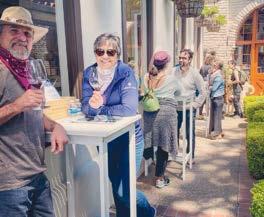






 BY MARK C. ANDERSON
BY MARK C. ANDERSON
Maia’s handwritten testimonial is clear, simple and powerful.
“Many thanks because my family eats more vegetables and greens,” it reads. “Thank you for the money to buy them. Thank you to all the people who cultivate them. I give thanks to God that people exist who care about my family, my health and my children.”
Clear, simple and powerful also work as themes for this story, particularly how powerful something as simple as access to fresh produce can be in saving swaths of citizens from scary health outcomes, and in saving society massive amounts in medical expenditures.
It’s also about the very type of food that moves the Edible Monterey Bay community—healthy, local, delicious, life-affirming organic fare—that frequently doesn’t reach those who need it most.
Maia, who wrote that note and whose name has been changed for this piece, participates in the produce prescription program called Fresh Rx administered by nonprofit Everybody’s Harvest—a program that is part of a movement called Food as Medicine.
At its five farmers’ markets, Everyone’s Harvest takes prescriptions issued by doctors at the Alisal and Seaside Family Health Centers and enrolls food-insecure families at increasing rates. What started out serving 10 families now caters to 150-plus.
Fresh Rx works like this: A physician like Dr. Pedro Moreno at Alisal Health Center meets with a family at his safety net clinic in Salinas and discovers they’re not eating as many healthy foods as they’d like and writes a produce prescription. The family takes the prescription to the info table at a market, registers and receives roughly $25 in tokens to spend on fruits and vegetables. Everyone’s Harvest pays the vendors for the tokens they bring at the conclusion of the market.
“Thanks to Everyone’s Harvest, I can ‘prescribe’ the best ‘medicine’ for my patients: fresh organic fruits and vegetables in our farmers’ markets,” Moreno wrote in a note to the nonprofit’s board. “On behalf of my patients, our most sincere gratitude.”
Everyone’s Harvest executive director Reid Norris and his farmers filled $80,000 in produce prescriptions last year alone.
“I know the families love it enough to keep coming,” he says. “Nutrition programs are my favorite part of the job, and have become such a big part of what we do. I feel like we’re a nutrition company that also runs farmers’ markets.”
Salinas Valley Memorial Hospital clinical dietitian Sara Housman is another healthcare professional who directs vulnerable patients with recent heart events to Fresh Rx.

“It’s not just, ‘Take your medicine and fix this,’” she says. “It’s putting the focus on food more than medication.”
While she admits it’s disheartening to hear patients say, “‘Well, that’s great, but I can’t afford to eat that way,’” she has an answer.
“It’s a fantastic feeling to say, ‘I can help with that.’ They feel supported. They can use their food money for other things, and don’t have to make hard decisions in the store,” she adds.
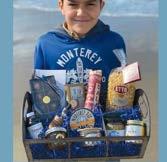
Those decisions are intense. Hunger in America studies have found 66% of food insecure individuals have to choose between food and healthcare and 57% percent are forced to make the same impossible calls between food and housing.
Housman sees these market-fresh interventions interrupting a downward spiral: food insecurity contributing to illness, which incurs costs and missed work, which adds to insecurity, and so on.
“This can put a stopping wedge in that,”
she says. “If we normalize [programs like] this, it would be a dream.”
Make no mistake. Food as Medicine programs are somewhat new, but the concept is timeless. Hippocrates said, Let food be thy medicine and medicine be thy food back in 400 BC.
What has changed is that a healthcare system that has long focused on treatment and pills is now getting far more serious about prevention and produce.
At EcoFarm 2020—remember when inperson conferences were a thing?—the shift was described as nothing less than a “healthcare revolution.” Dr. Rita Nguyen of the San Francisco Department of Public Health juxtaposed the timelessness and new push for data with a dash of no duh.
“It’s crazy that we have this as a study!” she said as part of a panel titled Prescribing Organic Food as Medicine. “Every private insurance carrier is now at least dipping a toe into this research. Policy makers and insurance carriers want to know [financial-savings] numbers in the food and medicine fields.”
A few numbers to know: A modest subsidy to buy more fruits, vegetables, whole grains and seafood for adults within Medicare and Medicaid in the U.S. could prevent 3.28 million cardiovascular events, ward off 120,000 diabetes cases and save $100.2 billion in healthcare costs, according to researchers at Tufts University.
That’s $100.2 billion, with a “b”—more than the GDP of whole countries, four times what the U.S. spent sending a man to the moon.
But this is not as complex as managing the economy of Costa Rica or Kenya. This is not a moonshot. It’s simple sustenance for Americans on the margins, who have only multiplied in the context of the coronavirus pandemic. Making sure they have access to nutrition should be a moral imperative, a selfevident must-do. But even if governments didn’t care about saving lives, it’s still a nobrainer for the simple economics.
The bad news is it took us so long to get to this. Hippocrates would not be impressed. But there are reasons for that, including Big Pharma profits and an abiding there’s-a-pill-
for-that mentality.
In addition, many in the healthcare sector have long considered food and nutrition programs social services, not health interventions. This despite food insecurity and chronic conditions like diabetes, heart disease and cardiovascular disease being closely connected.
“Food insecurity is not uniquely a food or moral issue or economic issue,” says Erin Franey, who collaborates with Nguyen as the program manager of the Food as Medicine Collaborative. “It’s a health issue. There’s a role for healthcare to play.”
While that may not be the most tantalizing food story ever told, it ranks among the most important.


“True public health involves prevention, and communicating that message has never been sexy,” Nguyen says. “But providers are starting to understand treatment is not just about technology and pills and hospital treatments; it’s everything, including housing and transportation and food.”
Nguyen believes evolution in food awareness has helped bring on the shift.
“Ten years ago people weren’t talking about food the same way they are now,” she says. “Culturally and generationally, people—and Millennials in particular—are much more conscious about the way they eat. People are into organics and really good sustainable food, not the microwaveable meals that I grew up with.”

A sweet Monterey Bay area senior we’ll call Amos (to protect his privacy) was having a tough go of it.
By 70 he had accumulated a history of past stroke, diabetes, hypertension and chronic obstructive pulmonary disease, much of it directly traceable to poor diet.
Earlier this year his conditions landed
him back in the hospital, but when he was released this time there was a big difference. Instead of returning to a diet of cheap and unhealthy foods, he was enrolled in a pilot program called Post-Discharge Meals. The clunkily named project furnishes medically tailored meals (MTMs) for Medi-Cal members returning home from being hospitalized, with a high likelihood of readmission.
The Central California Alliance for Health, which administers Medi-Cal benefits for Santa Cruz, Monterey and Merced counties, runs the pilot program; CCAH is also one of the regional entities participating in the Food as Medicine movement. A survey of Alliance clients revealed 50% percent of them, like Amos, are food insecure. (The U.S. Department of Agriculture, or USDA,
defines food insecurity as a lack of consistent access to enough food for an active, healthy life.)
In Monterey and Merced counties, they partner with Mom’s Meals to provide plates like roasted pork loin with apple cranberry sauce over white rice and mixed vegetables. In Santa Cruz County, they count on Teen Kitchen Project to assemble 14 meals a week for 12 weeks for each participating patient.
While providing food delivery for the ill is inherently helpful—and TKP has scaled up from 840 meals to 1,582 weekly to support COVID-19 needs early in the pandemic—its model enjoys an added benefit. Staff chefs train student community-service volunteers (who are sometimes hired) in professional culinary skills. A peek at its menu reveals all sorts of tasty plates like orange ginger chicken, zucchini nut bread and cauliflower-mushroom casserole, and recipes are shared on its website.
“There’s something special about these meals besides the fact they’re fresh and not frozen,” says TKP’s executive director Angela Farley. “They’re high fiber, heart healthy, low
What has changed is that a healthcare system that has long focused on treatment and pills is now getting far more serious about prevention and produce.
sodium, low fat, organic, diabetes friendly.”

The other something special: They’re saving lives. Studies of similar programs across the U.S. document 70% fewer emergency room visits and half as many return visits to the hospital for those eating medically tailored meals, denting the $160 billion-plus spent nationally on health-related expenses attributable to food insecurity.
Suddenly doctors are treating the source of the crisis and not symptoms.
The California alliance is currently evaluating the pilot. “The early data is really promising,” says Kathleen McCarthy, CCAH’s strategic development director. “Not only do people really like being in the program, but there’s a clear return on investment: It improves health and lowers costs.”
Amos is among those thrilled to participate. He enthusiastically gobbled up his meals, thanked CCAH profusely and hasn’t needed the hospital and its spendy treatments since. As he started discovering fresher food sources, Amos and his wife have started replicating the recipes they came to love on the exit-meals program.
MTMs is one of a range of local measures at work. CCAH has awarded some $1.7 million in grants to 10 different organizations in Santa Cruz and Monterey counties to partner with healthcare providers to decrease food insecurity among the Medi-Cal population.
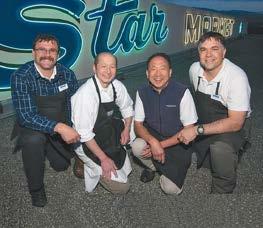
Community Bridges, for instance, does

hospital screenings for food insecurity—just as doctors screen for things like age, gender and family history in determining treatment—and refers those eligible to family resource centers for food distribution and additional tools. Second Harvest Food Bank Santa Cruz County fields clinic and hospital referrals for nutrition prescription and a nutrition/cooking class. Esperanza Community Farms delivers diabetes patients nutrition group classes and CSA vegetable boxes.
This spring, Salinas Valley Memorial Hospital—where Housman and her clients are loving the Fresh Rx program—was among scores of state community groups that signed a position paper sent to the California Department of Health Care Services. The groups—including Second Harvest, Teen Kitchen and Santa Cruz’s Go for Health!— called for extended medically supportive food and nutrition services.
The gist: As part of an ongoing effort to improve Medi-Cal, food-as-medicine interventions should be built into healthcare going forward. This way is working.
As one of the pioneers of the movement, Dr. Andrea T. Feinberg of the Geisinger Fresh Food Farmacy, puts it, “If one considers [healthy food] to be the equivalent of a drug covered by insurance and provided by the healthcare system, then this is essentially a disease management program—just more
successful than most.”
Katie Ettman helped draft the position paper as part of her work with Bay Area-based nonprofit think tank, SPUR, advocating for healthy, just and sustainable food systems.
“When people think of ‘food as medicine’ they often think of juice cleanses and turmeric tea, but we are talking about something much more accessible: providing healthy food to more people,” Ettman says. “Food as medicine is about investing in the prevention of disease so that we can help people before they get sick…the food-asmedicine movement may not be mainstream yet, but it should be.”
Dr. Nguyen chose to work with the Food as Medicine Collaborative precisely because of its accessibility. Entrenched realities contribute to food insecurity, but she knows that those are far more difficult dragons to slay than diagnosing nutrition shortages and furnishing food access.
“If I could fix one thing that contributes to food insecurity, it would be inequality or racism, but I can’t fix those,” she says. “The reason I picked food is it’s the most direct tangible link. This has impact. If you want to be impactful, go to the source of the problem.” Hippocrates would be proud.
Mark C. Anderson is a roving writer, editor, explorer and entrepreneur based in Monterey County. Follow and/or reach him on Twitter and Instagram via @MontereyMCA.
Healthful recipes that are simple to prepare is the objective of a pandemic collaboration between Magali Brecke and Liz Birnbaum that resulted in an ebooklet called Eat and Be Well—available as a free download on the Kitchen Witch website.
“I believe deeply in the power of our daily food choices to shape the quality of our lives on a physical and emotional level,” writes Brecke.
“This recipe sounds fancy and tastes fancy too, yet there is nothing complicated about this dish,” she adds. “It’s just quality ingredients and an easy infusion technique that elevates these greens and highlights their natural, complex texture. Keep this in your back pocket for a dinner gathering (served with white fish and rice) or simply for getting more greens into your diet.”
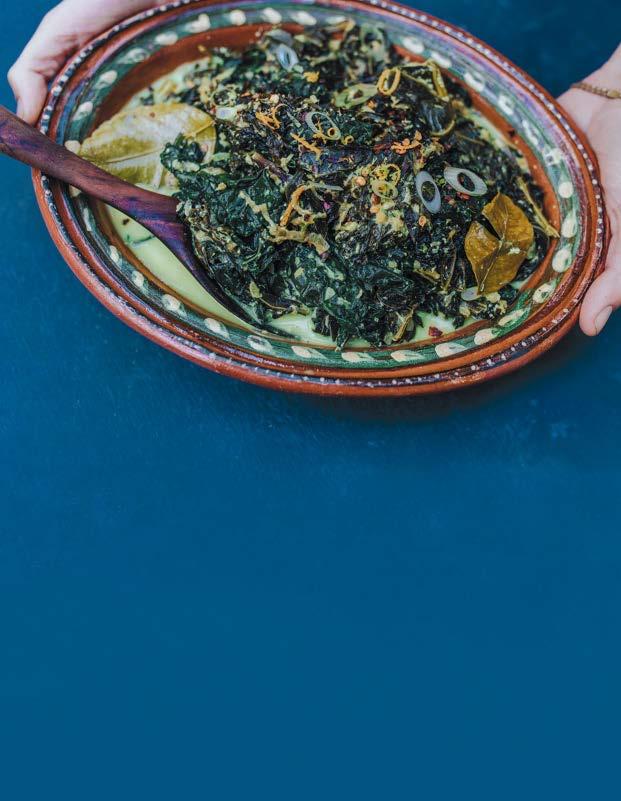
4 bunches leafy greens (any mix of dinosaur kale, curly kale, red kale, collard greens, mature spinach or chard, stripped from stems and shredded into medium-sized pieces)
3 large shallots, shaved or thinly sliced 1-inch piece fresh ginger, minced or grated
2 cloves garlic, shaved into chips or minced
1 to 1½ cans coconut milk
3 scallions, white and light green parts, thinly sliced
3 fresh makrut lime leaves, whole (optional, but worth the search)
Zest of 1 lime, minced
Crushed red pepper flakes (or more if you like it spicy)
1 tablespoon healthy cooking fat, such as coconut oil, ghee or avocado oil
Sea salt
In a large, deep pan with a lid, heat oil on medium and sauté the shallot until aromatic and translucent, about 3 to 5
minutes. Add ginger and garlic, sauté till aromatic but not brown, and add some salt. Add 1 full can coconut milk and bring to a simmer. Add the makrut lime leaves if you have them.
Next, add all shreds of greens and another dash of salt, toss if space allows, and cover and allow to simmer on low for about 10 to 15 minutes, till the greens have cooked through. Now that you have more room, really toss the greens to coat.
If mixture is looking dry (the greens should be simmering in a nice broth, not covering them but relatively close) or if you really love coconut milk, add another ½ can. Mix well to coat, taste the broth for salt.
Remove makrut lime leaves (or leave for decoration), sprinkle on lime zest and a dash of red pepper flakes and top with green onion. Serves 4–6

You know you want to. Give it a try!
Bacon needs no introduction. Known and beloved (sometimes even by vegetarians) it is a perfect marriage of flavors; salty and sweet, fatty and crunchy and full of savor. Yet, dare I say, if you have not made bacon at home, you have not truly tasted bacon in all its glory.
From a maple-bourbon wet-cured bacon to a spicy scorpion pepper dry cure, there’s a wide range of flavor possibilities to explore. All you need is some local pork belly, salt and sugar, time and space. A smoker is a useful tool, but a barbecue grill can be repurposed to serve the same function.
The first step in making bacon is to procure a pork belly. You’re looking for a nice slab, about 2 pounds for this recipe, with the skin removed. (You can remove the skin yourself, before or after curing, but it is a delicate and difficult bit of knife work.) You’ll probably have to order ahead of time to get what you’re looking for, so you may as well be specific. You are looking for an evenly thick piece of meat, so that the salt gets evenly distributed throughout it.
Be aware that pork belly is a commodity item, and as such, much of the available stock comes from feedlots. Don’t support irresponsible agricultural practices. Not only is there a huge difference in the flavor of the meat, but also the large conventional operations often feed antibiotics to their animals, which remain in the meat. Eating meat, or taking the life of an animal, ought to be done with regard for the health and wellness of both human and animal. When you are making something that will make you swoon with pleasure at the first bite, let part of that pleasure be rooted in knowing that you have contributed to humane practices that ensure that your bacon had a happy, healthy life before it landed on your plate. Contact a local producer directly, or order from a local market with a good meat counter. Making connections to your local food web has never been more delicious.
A homemade smoker is useful, but a barbecue grill can be used instead.
Let’s talk a bit about curing. Simply put, curing is an ancient process of preserving meat with salt. The salt works its way steadily into the meat, and through osmosis, the water in the meat is replaced with salt, which has an antimicrobial action that resists spoilage. Pure salt, however, has a drying effect and can render the meat tough and dry. To counteract this, sugar, honey or maple syrup is often added to balance the flavor. When making bacon, there are two basic styles of curing, wet cure and dry cure. In a dry cure recipe, a salt/sugar/ spice blend is rubbed on the outside of the meat. It penetrates slowly throughout the meat, resulting in moisture loss and a salty, concentrated flavor. A wet cure recipe will include liquids, mostly water, but sometimes espresso, maple syrup or other flavorings, as well as the usual salt, sugar and spice. This results in a more succulent bacon. Nitrites, aka curing salts, are often added in small amounts to either cure. While bacon can be (and was, for many years) cured without them, they do add some unique benefits to the process. Nitrites give bacon a rosy pink color and some of its distinctive flavor; without them, the flavor can be more like pork roast.
While salt and sugar can cure meat safely, if you want to smoke your bacon, adding nitrites is the safest way to inhibit botulism in the low temperatures of the smoker. Don’t smoke your bacon without it. In large quantities, nitrites can have adverse health effects; some choose to avoid them altogether, while others limit their consumption of cured meats in general. Nitrates occur naturally in celery juice


and a few other vegetables; bacon that is advertised as having no nitrites usually contains modified celery juice powder. (Nitrates turn to nitrites in our bodies, but are chemically distinct before cooking and digestion). The USDA currently does not recognize naturally occurring nitrates as effective curing agents in meats, so any product containing them is required to be labeled as “uncured.” Find a recipe that calls specifically for celery juice powder if you want to experiment. Otherwise, use the classic Instacure #1 and just don’t eat your homemade bacon for every meal. Bacon that does not contain nitrites should not be smoked, but can safely be stored in the fridge or freezer.

Ensure that your bacon had a happy, healthy life before it landed on your plate.
2 pounds pork belly, trimmed and rinsed
2 dried chiles, such as pasilla
2 tablespoons sea salt
¼ teaspoon Instacure #1 (optional, but do not omit if smoking)
¼ cup maple sugar
1 teaspoon dried thyme
1 teaspoon dried rosemary, crumbled
2 tablespoons coarsely ground black pepper
Prepare the pork belly. Rinse and pat dry. Toast the dried chiles until they are fragrant. Remove the stems and crumble them into a small bowl. Add the salt, Instacure #1, sugar and spices to the bowl and mix very well. Lay the pork belly out on a working surface, and rub the salt mixture evenly over all sides. Slip the pork belly into a 1 gallon Ziploc bag, and press out the excess air.
Place the bag flat in the refrigerator. Every day, flip the bag over to redistribute the moisture that will begin to seep from the cure. Rub the belly through the bag, to incorporate all the seasonings deep into the meat. This step makes a big difference, so don’t skip it. After 7 days, remove the pork belly from the bag. It should feel firm all over, like a well-cooked steak. If parts still feel too squishy, massage it well all over and place it back in the fridge for another day until it feels firm all over.
Rinse the meat well and pat it dry. If you have not used a curing agent in the recipe, the bacon can be chilled and sliced at this time, and stored in the fridge or freezer, as directed below.
To smoke the bacon, place on a rack set over a baking sheet and put it back in the fridge, uncovered, for one more day. This will allow the salts to equalize and cause a pellicle to form, so that the bacon does not dry out while smoking. Heat a smoker to 175° or 200° F. If you do not have a smoker, a barbecue kept at a low smoldering heat will suffice; periodically sprinkle damp apple or hickory sawdust over a bed of hot coals to create a fragrant smoke, and keep the vents open just enough to keep the coals barely alive. In all cases, monitor the temperature carefully make sure that it remains below 200°; the goal is not to cook, but to dry, cure and flavor the meat.

Place the cured pork belly on a rack in the smoker, fat side up, or hang it from a hook in a larger smoker. Hot-smoke the meat for about 2 hours, until the internal temperature registers as 150° F. Test the bacon in several places to ensure that the internal temperature has reached the right temperature, but do not let it get hotter than that. If the internal temperature of the meat does not rise to this level, smoke the meat for 2 hours and finish heating in an oven.
Remove the bacon from the smoker and allow it to cool. Place it in a fresh Ziploc bag and refrigerate. Allow the bacon to chill for 4 hours or overnight, so that the meat firms up and it is easier to slice. You can also slip it into the freezer for a short time to make it extra firm for even slicing. Slice the bacon to the desired thickness. Seal it in individual portions with a vacuum sealer, and store the excess in the freezer. Sealed bacon will keep in the refrigerator for up to 10 days and in the freezer for 6 months.
young bartender is one to watch
 BY MARK C. ANDERSON PHOTOGRAPHY BY MARGAUX GIBBONS
BY MARK C. ANDERSON PHOTOGRAPHY BY MARGAUX GIBBONS
You don’t meet many hardcore hospitality lifers who are 24. But here comes Johnathan Jeronimo, nearing a decade in restaurant and bar employment, 110% confident this is his career path, for the duration.
The bar manager of the historic Terry’s Lounge at Cypress Inn in Carmel speaks like a senator about the importance of hospitality.
“If you can grow while lifting up everyone else, that in and of itself is powerful,” he says. “It’s all about positivity, spreading the good vibes.”
For Jeronimo, the busier the better, which has made limited operations amid COVID-19 a challenge for his social tendencies.
“When it’s the busiest I come alive,” he says. “Some people dread that. Instead I’m excited about who I’ll talk to and who’ll want one of my drinks. I can really show them who we are.”
In one way his path in this direction was predestined. Or as he says, “It’s in my blood.” His father is a career server.
“My dad worked two jobs, all day long, 9 in the morning to 11 at night,” he says. “If my dad can work hard, I can work harder. I like to say I was bred for this.”
His restaurant resume reads like a local—and accelerated—tour de force. At 15, he was baptized by fast-paced, high-volume fire at Lalla Grill and Lollapalooza. Next he learned old-school white tablecloth service at Anton & Michel, mesmerized by the commitment of 40-, 50and 60-something staffers. Former Bernardus Lodge food and beverage director Michael Marcy recruited him away and within three months Jeronimo rose to head busser there.
“With Bernardus I was getting to see ingredients and tasting menus few get to see,” Jeronimo says. “I knew I’d be in it for life: Bringing the money home was a big thing, but I learned that if you love what you do, the money will be there.
“The thing about food,” he adds, “is everybody eats. Why not make
it special? That’s what they come here for. I want to make memories.”
When Marcy helped open Cultura comida + bebida, so did Jeronimo, taking reps as server and bartender. Between bar manager Josh Perry at Cultura and his next cocktail mentor, Francis Verrall at Mezzaluna, he had two award-winning minds to pick and two five-star work flows to emulate.
“They trained me to a T,” he says. “You can’t be sloppy. Even though they’re the best, there will still be moments when they’ll make a cocktail two times before they’ll serve it. That’s why they’re the best. They believe their work always needs to get better.”
That experience earned him the start at Terry’s. Once he landed, it didn’t take long for food and beverage manager Nancy Tran to spot something special.
“I noticed his talents when he first got here,” she says. “He was always very passionate, and then he started diving deeper and deeper.”
Terry’s is a throwback place with a hyper-loyal clientele that makes tweaking its classic cocktail formula fraught. But as Jeronimo started experimenting, Tran let the young fun run.
“I give Johnathan free range to express his creativity,” she says. “I think that he’s been able to concoct some amazing cocktails that not only satisfy the palate of our older clientele, but those who don’t quite know what they’re looking for.”
As she readied for her sommelier certification, Tran invited Jeronimo to sit in on tastings to expand his palate. Flash forward to the present and he’s going for his own certification. Partly because of its wine program, he took a second job at Michelin-starred Aubergine as a dining room attendant.
“I was a caterpillar when I started,” he says. “I’m turning into a butterfly and I love it.”
See Jeronimo’s recipe for The Deadwood cocktail at ediblemontereybay.com

























